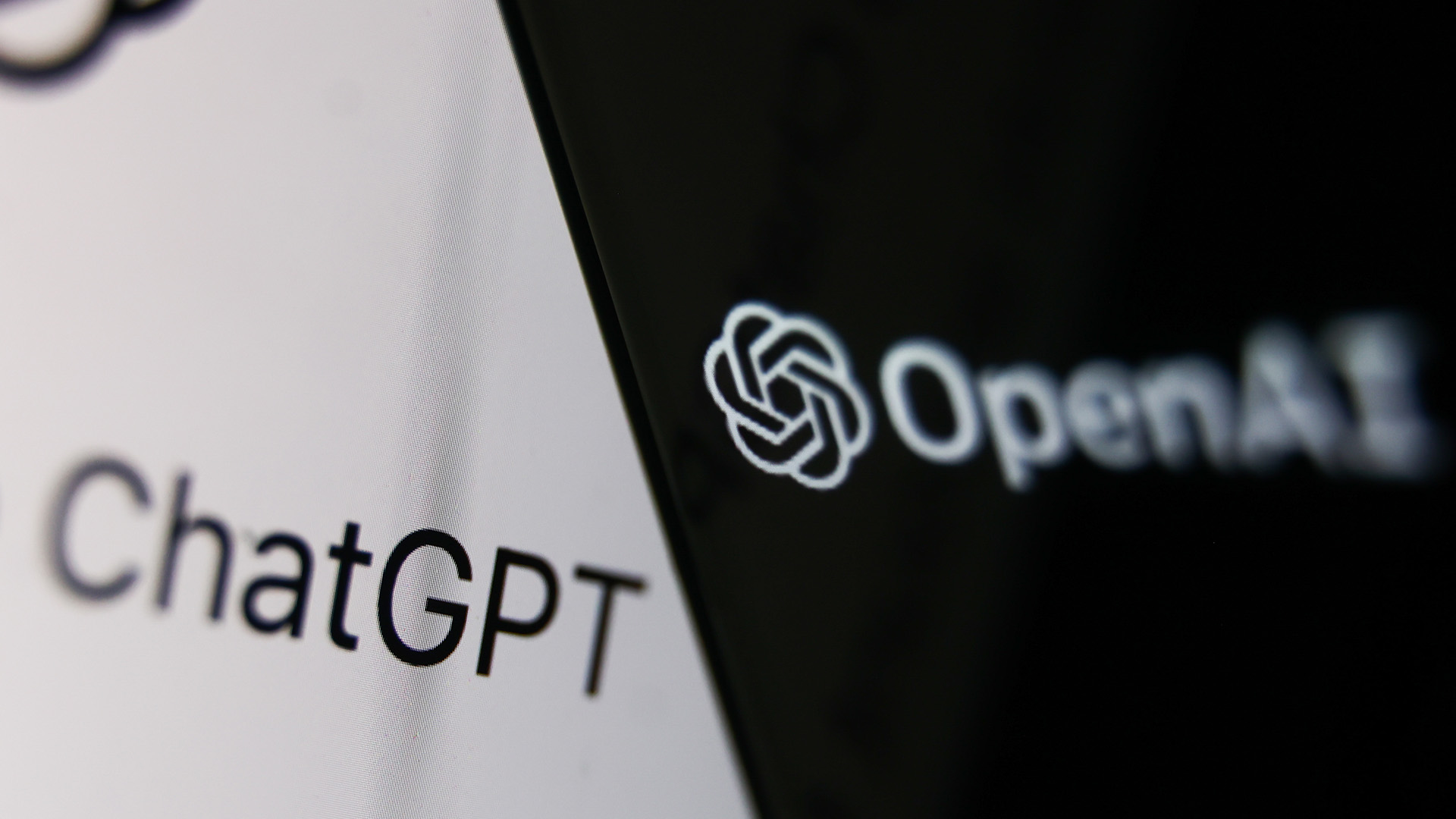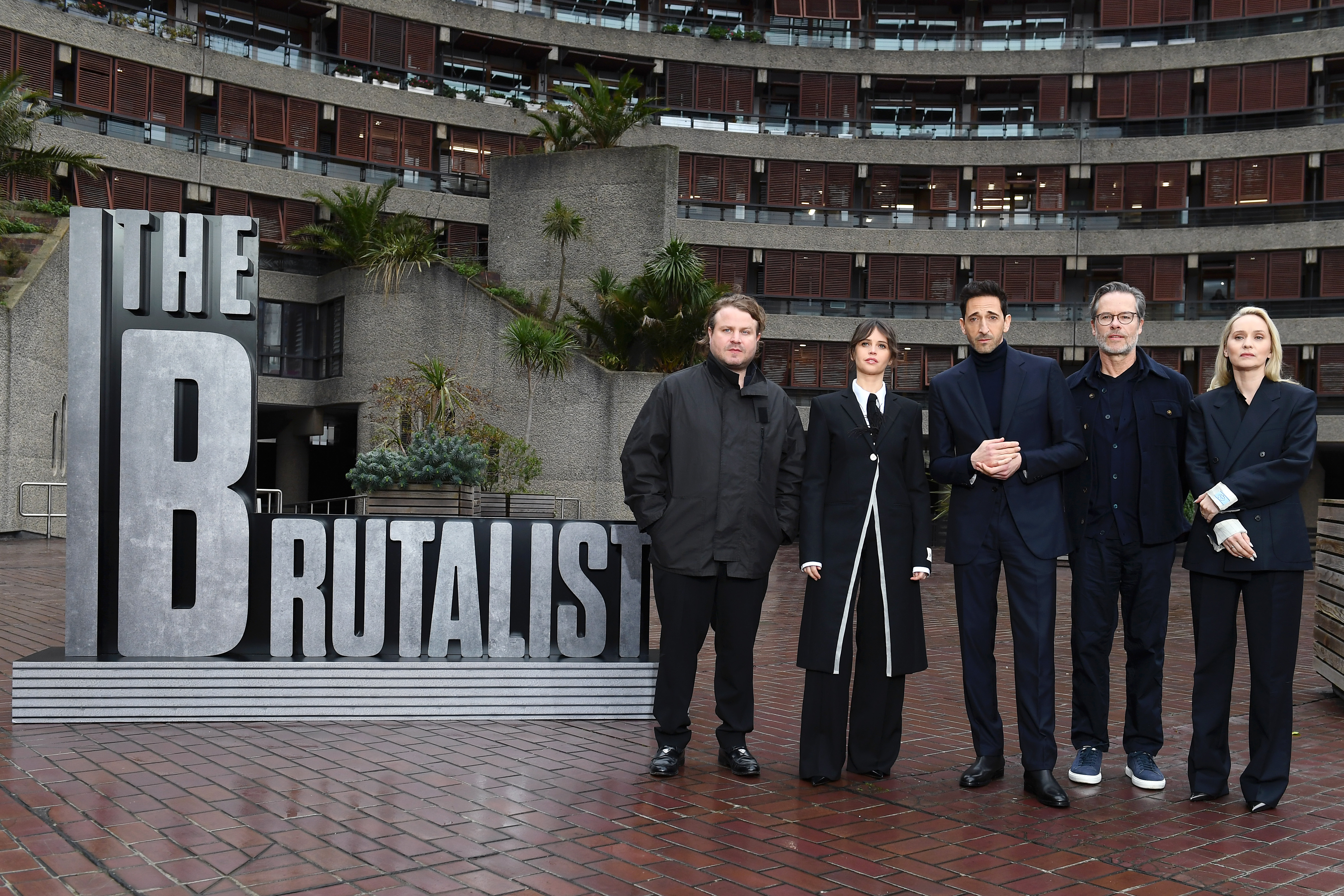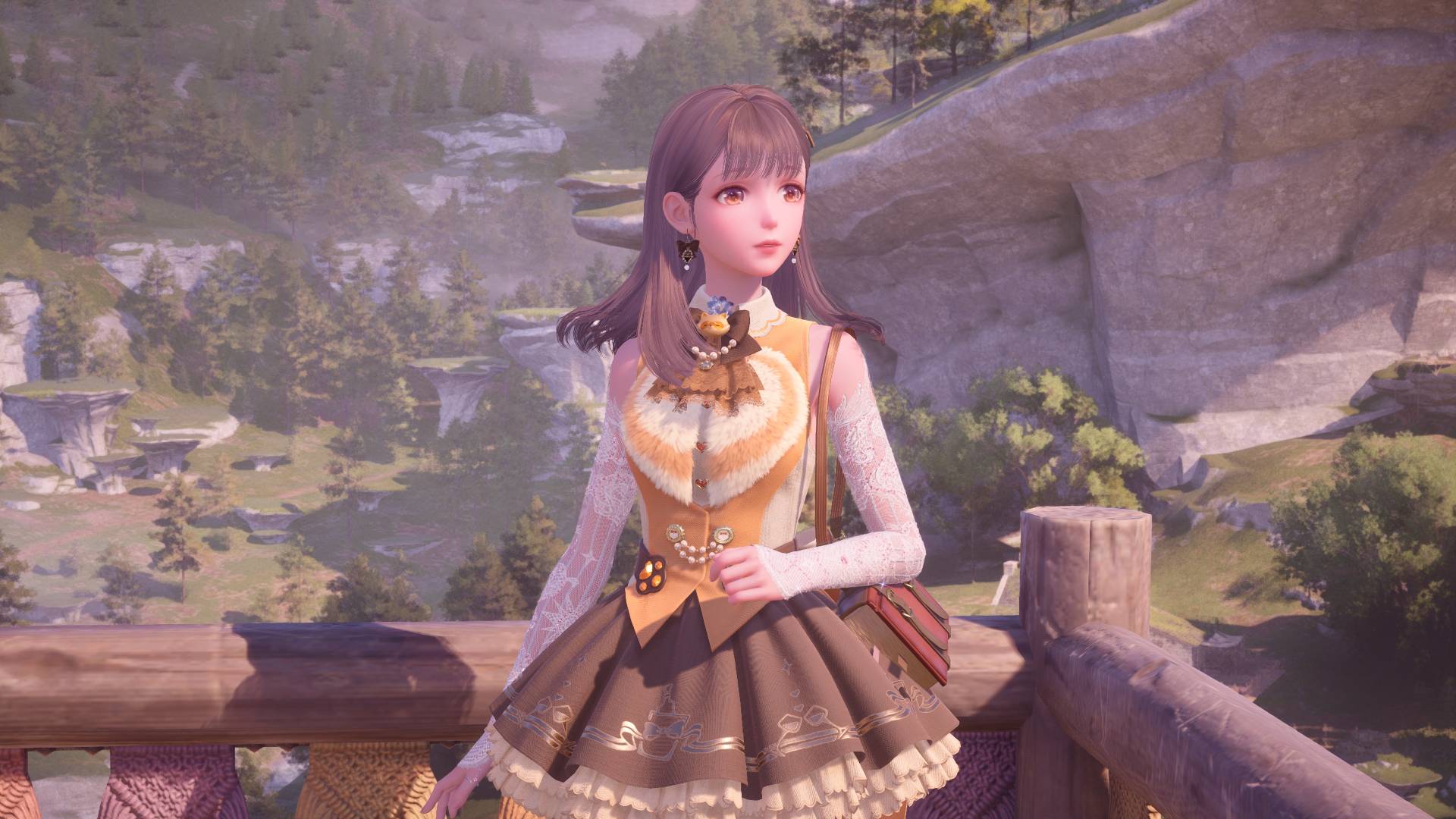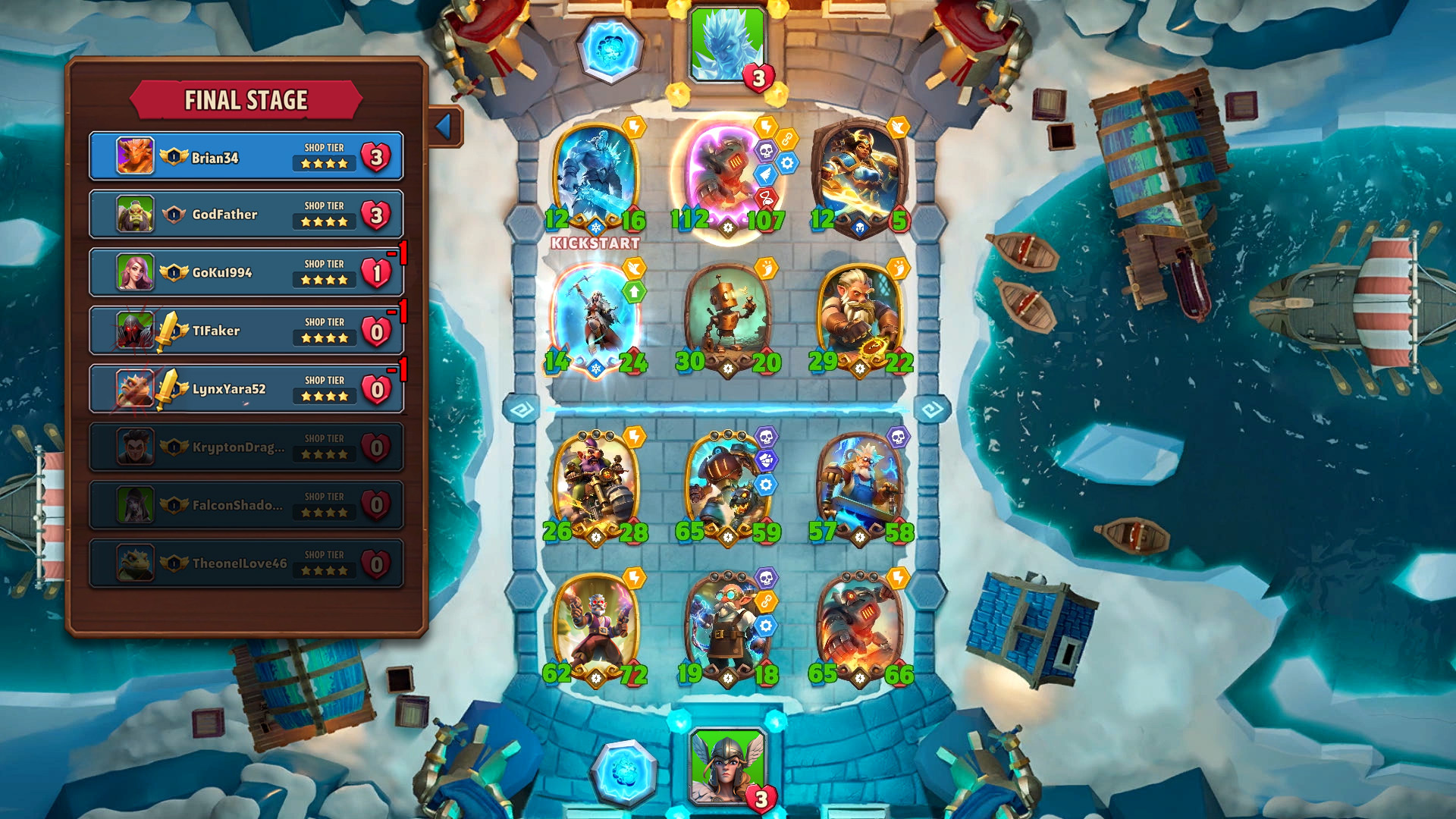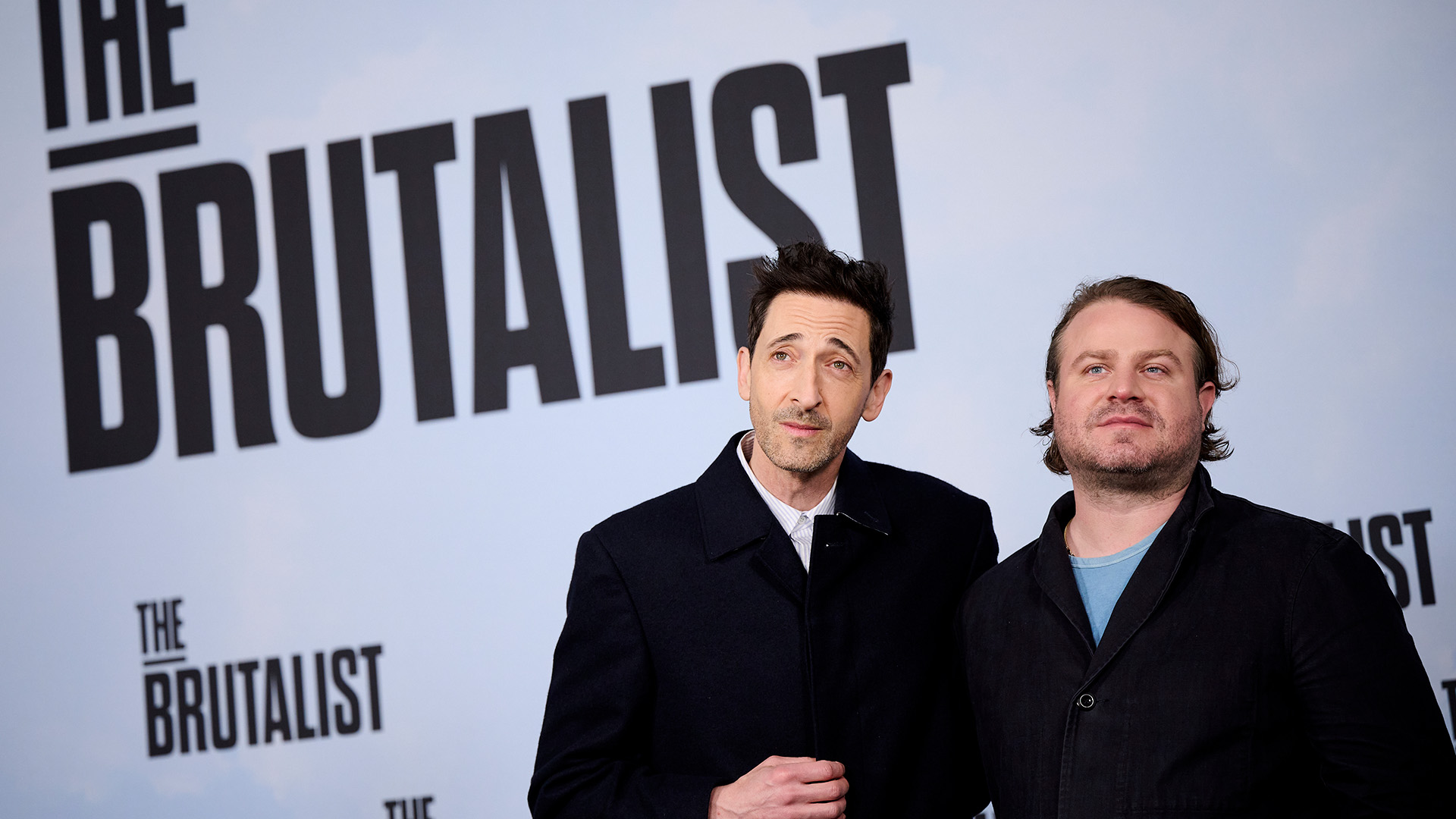
Screaming from the rooftops.
The Brutalist, the Adrien Brody-led historical fiction epic currently in theatres, has cinema sickos like me frothing at the mouth. For a start, it’s already won three Golden Globes, and for another, The Brutalist is one of vanishingly few pictures to be shot entirely in VistaVision since the 1960s. Besides that though, this period piece is also notable for how it’s leveraging more recent technological advancements—namely, AI.
The Brutalist builds the life story of fictional architect László Toth brick-by-brick, a Hungarian-born Jew who flees Europe amid antisemitic persecution. Though leading actors Adrien Brody and Felicity Jones both worked with dialect coach Tanera Marshall to perfect their Hungarian accents, it’s since come to light that AI was used as part of the post-production process to alter lines of spoken dialogue. In a statement issued to Deadline, director Brady Corbet insisted that Jones and Brody’s performances remain “completely their own” though.
What is artificial general intelligence?: We dive into the lingo of AI and what the terms actually mean.
Corbet explains, “Innovative Respeecher technology was used in Hungarian language dialogue editing only, specifically to refine certain vowels and letters for accuracy. No English language [dialogue] was changed. This was a manual process, done by our sound team and Respeecher in post-production. The aim was to preserve the authenticity of Adrien and Felicity’s performances in another language, not to replace or alter them and done with the utmost respect for the craft.”
Deadline also claims that generative AI was used to create architectural blueprints shown during one of the film’s final sequences, though Corbet writes, “All images were hand-drawn by artists. To clarify, in the memorial video featured in the background of a shot, our editorial team created pictures intentionally designed to look like poor digital renderings circa 1980.” As for the buildings so pivotal to the film’s architectural arc, Corbet says, “[Production designer] Judy Becker and her team did not use AI to create or render any of the buildings.”
The post-production use of AI first came to light earlier this month in an interview between the film’s editor, Dávid Jancsó, and Red Shark News. This article originally claimed that GenAI was used to create both architectural drawings as well as the finished buildings seen onscreen. A more recent update from Red Shark News responds to Corbet’s claims, citing this 2022 interview for Film Maker Magazine with Judy Becker.
In this earlier interview, Becker says that architecture consultant Griffin Frazen used Midjourney to quickly generate a number of Brutalist-style structures that would then be “redrawn by an illustrator to create mythical buildings.” Based on this, it appears that AI was definitely involved during the initial ideation process, but AI-generated images did not end up onscreen wholesale. This admitted use of Midjourney as a jumping-off point in pre-production is still disheartening though, as many creatives would argue that the ability to ideate is a foundational part of the work.
As for the spoken Hungarian dialogue, let’s return to that interview between Red Shark News and Dávid Jancsó. Jancsó is a native speaker of Hungarian himself, and says that both Brody and Jones “did a fabulous job” speaking “one of the most difficult languages to learn to pronounce.” Still, the production team wanted the spoken Hungarian dialogue to sound so authentic that “not even locals will spot any difference.”
Jancsó elaborates that the post-production team’s first port of call was a more traditional method of ADR, with actors re-recording lines in a sound studio. The level of authenticity sought continued to prove elusive throughout these sessions though, which finally brings us to the involvement of Ukraine-based speech synthesis company Respeecher.
Respeecher’s technology has previously been used to clone the voice of a younger Mark Hamill for the Mandalorian, and Jancsó goes on to assuage a number of ethical concerns I had about how the company creates its synthetic voices. In the case of The Brutalist, actors Adrien Brody and Felicity Jones both willingly contributed their voices to the AI model in order to create the appropriate audio target for the eventual cloned voices. Dávid Jancsó also contributed his own voice to the model to help create the desired Hungarian pronunciation.
Jancsó told Red Shark News, “Most of their Hungarian dialogue has a part of me talking in there. We were very careful about keeping their performances. It’s mainly just replacing letters here and there. You can do this in ProTools yourself, but we had so much dialogue in Hungarian that we really needed to speed up the process otherwise we’d still be in post.”
“We had so much dialogue in Hungarian that we really needed to speed up the process otherwise we’d still be in post.”
Dávid Jancsó, film editor for The Brutalist.
As a Brit, I’ve definitely heard my fair share of poorly imitated regional accents—and as an occasional German speaker, I am frequently humbled when native speakers switch to English once they get a load of my abysmal accent. Speaking like a local in any target language is no easy feat, even for the most talented actor, and going to such lengths to faithfully portray spoken Hungarian to a broad audience is laudable.
What’s also praise-worthy is the actually thoughtful and considered use of AI. For a start, AI was implemented as a tool to be used by human hands, and not a haphazard replacement cynically intended to eliminate a job. Furthermore, the production team did not rely on established audio models utilising questionably sourced datasets—everyone who gave voice to The Brutalist’s spoken Hungarian dialogue appears to have had a real say in it. Alongside that GPU fan ‘organ’ I wrote about last year, it’s one more example that proves AI can be utilised in a considered way that doesn’t replace actual human artists.
Unfortunately for now, these examples are still wildly outnumbered by stories about AI’s outsized environmental impact, terribly boring AI-generated NPC dialogue, and even backseat gaming assistants. Considering how much so-called AI continues to fail to intelligently understand anything, it’s going to be a long four years…
Best gaming PC: The top pre-built machines.
Best gaming laptop: Great devices for mobile gaming.

